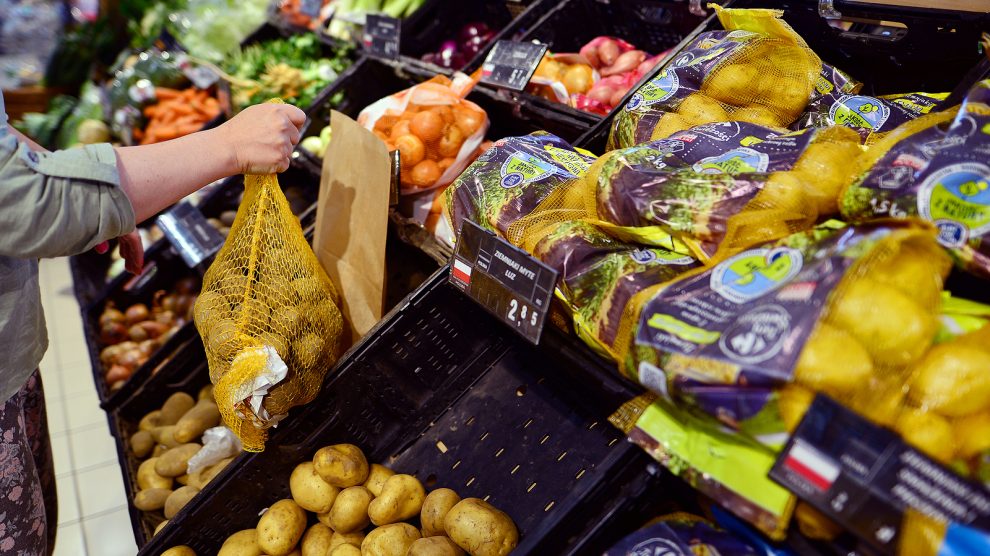In the long term, the phasing out of the inefficient use of gas is likely to be positive for Europe’s competitiveness.
High gas prices and persistent inflation continue to weigh on the economic outlook, according to the latest regional economic prospects forecasts from the European Bank for Reconstruction and Development (EBRD).
Output in the bank’s regions, which stretch across three continents, is now expected to grow by 2.1 per cent in 2023, down from the three per cent predicted in its last report in September.
- Economy in focus: Czechia
- Why gaps in experience and expiring skills pose unemployment risk for CEE youth
- It took a war to put Moldova on the map
Growth forecasts have been adjusted downwards in more than half of the 36 economies in which the EBRD works, with very few upward revisions.
Growth in the bank’s regions is expected to pick up to 3.3 per cent in 2024.
Output is estimated to have grown by 3.2 per cent year on year in January-September 2022 and by around 2.4 per cent for the year as a whole – slower than in 2021, as Russia’s war on Ukraine took its toll and the post-Covid recovery ran out of steam.
Nevertheless, growth exceeded expectations, as consumers in emerging Europe continued to spend private savings accumulated during the pandemic.
Gas prices have now largely returned to the levels seen before the war, as new supplies of liquefied natural gas and deliveries from Norway and Algeria help to reduce price pressures. Thanks to lower consumption, driven by Europe’s mild winter and higher prices, gas in storage in Europe is above corresponding levels in 2021, the bank reports.
However, in real terms, such levels are comparable to the highs of the 1980s and amount to gas prices six times higher than those across the Atlantic.
At the same time, average inflation in the EBRD regions dropped to 16.5 per cent in December after peaking at 17.5 per cent in October (a rate last recorded at the end of the transition recession in 1998).
“The EBRD’s economies are still suffering from a mix of high gas prices and inflation, with the latter likely to take longer to fall than markets expect,” says Beata Javorcik, the EBRD’s chief economist.
“Optimism about the rate of recovery and growth after the crises of recent years, notably the war in Ukraine, is, in our view, misplaced. That is why we are calling this end-of-winter update to our forecasts ‘Not out of the woods yet’.”
In the long term, the phasing out of the inefficient use of gas is likely to be positive for Europe’s competitiveness, the new report points out.
In the short term, however, consumers heating their homes, firms in gas-intensive industries and governments subsidising energy bills remain squeezed by the historically high prices.
Government energy subsidies in central and south-eastern EU economies, for example, are estimated to account for around 3.6 per cent of gross domestic product (GDP) on average.
The regional outlook
Among the individual EBRD economies and regions, the bank forecasts a rise in Ukraine’s GDP of one per cent this year (down from the eight per cent forecast last September). This would amount to a stabilisation of real output at around 70 per cent of its 2021 level. The bank’s forecast for 2024 is for three per cent growth.
Output in Central Europe and the Baltic states is expected to increase by 0.6 per cent in 2023. It will be highest in Croatia, at 1.5 per cent.
In 2022, the region’s economies proved more resilient than expected, but falling purchasing power, weaker external demand from advanced Europe and elevated financing costs are expected to weigh on growth this year. Growth is forecast to pick up to 2.7 per cent in 2024, still below medium-term potential, reflecting continued high energy prices and short-term costs associated with the green transition.
Countries in the south-eastern European Union have also been resilient to shocks, but experienced sharply lower growth rates in the second half of 2022. Growth of 1.5 per cent is forecast in 2023, picking up to 3.1 per cent in 2024.
Similarly, while economic growth in the Western Balkans moderated in 2022, household consumption proved resilient. Growth in 2023 is expected to slow to 2.2 per cent (Montenegro will see the highest growth, at 3.3 per cent) reflecting weak external demand, persistently high inflation and tighter financing conditions. Growth is however seen picking up to 3.4 per cent in 2024, led by Kosovo whose economy could grow by four per cent next year.

High growth in Armenia, Georgia
Output in Eastern Europe and the Caucasus (excluding Ukraine) exceeded expectations in 2022, driven by high growth in Armenia and Georgia.
Growth is, however, expected to slow to 2.7 per cent in 2023 before accelerating moderately to 3.6 per cent in 2024 amid the waning impact of extraordinary factors related to the rerouting of trade around Russia and the inflow of capital and skilled migrants.
In Central Asia output is expected to grow by 4.9 per cent in 2023 – in Kyrgyzstan and Tajikistan it will top seven per cent. This slight upward revision from September reflects the boost from high oil and gas prices for commodity exporters, increased inflows of labour, capital and remittances, and a rise in intermediated trade.
Output growth is seen picking up to 5.4 per cent in 2024 on planned infrastructure investments, high commodity prices and the relocation of Russian businesses.
Unlike many news and information platforms, Emerging Europe is free to read, and always will be. There is no paywall here. We are independent, not affiliated with nor representing any political party or business organisation. We want the very best for emerging Europe, nothing more, nothing less. Your support will help us continue to spread the word about this amazing region.
You can contribute here. Thank you.







Add Comment